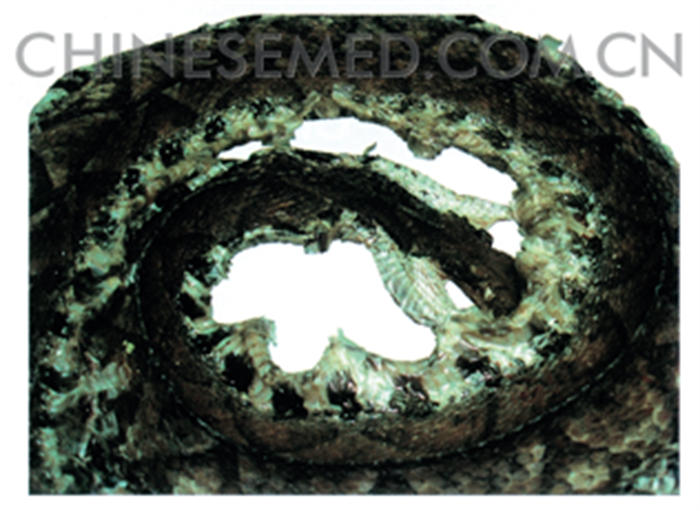

Source Long-nosed Pit Viper is from the viscerated and dried body of Agkistrodon acutus (Guenther), family Grotalidae.
Producing Areas Hubei, Zhejiang, Jiangxi and Fujian, etc.
Properties Sweet and Salty, Warm, Toxic
Channels Liver meridian
ACTION
- Treats Bi syndrome of wind-dampness, with numbness in the limbs
May be used with incised notopterygium rhizome and root (qianghuo), radix angelicae pubescentis (duhuo), Szechuan lovage rhizome (chuanxiong), Chinese angelica (danggui), etc soaked in wine application such as baihuashe wine. - Used in apoplexy with paralysis, deviation of the eyes and mouth
May be combined with tall gastrodia tuber (tianma), Chinese angelica (danggui), largeleaf gentian root (qinjiao), earthworm (dilong), etc. - Arrests convulsions in infants
May be used with scorpion (quanxie), cicada slough (chantui), tall gastrodia tuber (tianma), cinnabar (zhusha), cow bezoar (niuhuang) etc and consumed in pills. - Arrests tetanus
May be combined with black-tail snake (wushaoshe), centipede (wugong). - Treats leprosy and skin irritations
May be used with black-tail snake (wushaoshe), lightyellow sophora root (kushen), Chinese honeylocust (zaojiao), etc.
Usage and Dosage
3–9 g is used in decoction for oral use, or 1–1.5 g in the powder 2–3 times daily. May be soaked in spirit and used in pills or paste.
Note
Not to be used in the person with internal heat due to yin-deficiency.


Storage
Keep in earthenware with lime and preserve below 30°C. Or keep it with Chinese prickly ash.
Description of Quality Herb
The good one has its head and tail intact, a big body, apparent pattern and clean inner surface.
Professional Tips
The common fake is the combination of the head and skin of the long-nosed pit viper (qishe), and the flesh and bone of other snakes glued together.

